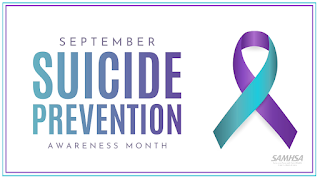Mental Health in Schools
Amy Clay, School Psychologist
(Brunson Elementary, The Downtown School, Wiley Middle & Parkland High)
My favorite part of this story is a discussion of the roles and realities related to mental health issues in children. I've included excerpts below:
"The teacher
The role: During the week, many students see their teachers even more than their own families. Teachers are in a prime spot to notice changes in behavior. They read essays, see how students relate with other kids and notice when they aren't paying attention.
The reality: Teachers already have a ton on their plates. They're pressured to get test scores up, on top of preparing lessons and grading assignments. Plus, many teachers receive minimal training in mental health issues. But when they do see something concerning, they can raise a flag.
The social worker
The role: Social workers act like a bridge. If teachers come to them with a concern — maybe a child is acting withdrawn — one of the first things they'll do is call home. They see each child through the lens of their family, school and community. They might learn that a family is going through a divorce or homelessness.
The reality: There aren't enough of them. According to one model, every school should have one social worker for every 250 students. The reality is that in some schools, social workers are responsible for many more.
The counselor
The role: In some schools, counselors focus solely on academics: helping students pick classes and apply to college. But in others, they also act a lot like social workers, serving as a link to families and working with students who need support.
The reality: Like school social workers, there just aren't enough counselors. On average nationwide, each counselor is responsible for nearly 500 students. The American School Counselor Association recommends a caseload nearly half that size.
The school psychologist
The Role: Here's one job that, on paper, is truly dedicated to student mental health. School psychologists are key players when it comes to crisis intervention and can refer students to outside help, such as a psychiatrist.
The reality: If you sense a pattern here, you're right. In the U.S., there is just one school psychologist for every 1,400 students, according to the most recent data available from the National Association of School Psychologists."
The National Association of School Psychologists recommends one school psychologist for every 500-700 students. Currently, WSFCS has approximately 1 school psychologist for every 2,500 students.
We will continue to follow this series and hope that you do, as well. You can find Part One of NPR's series on mental health in schools here:
Mental Health in Schools: A Hidden Crisis




Comments
Post a Comment